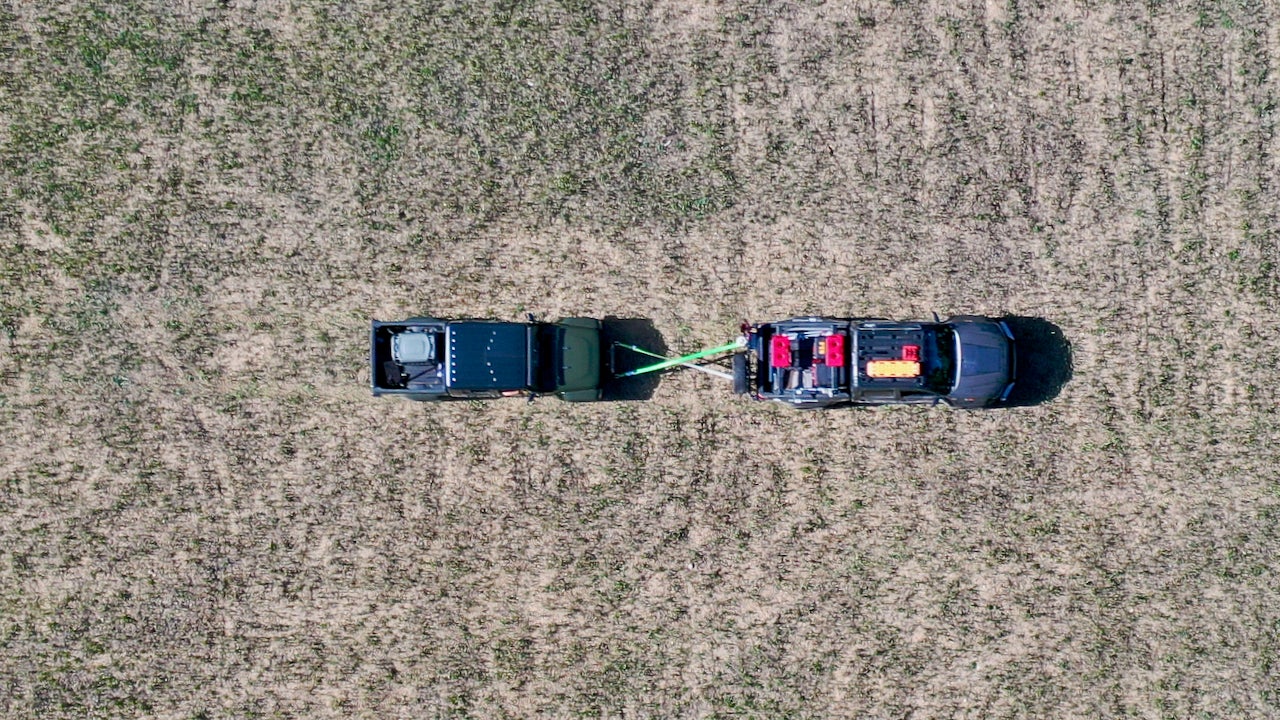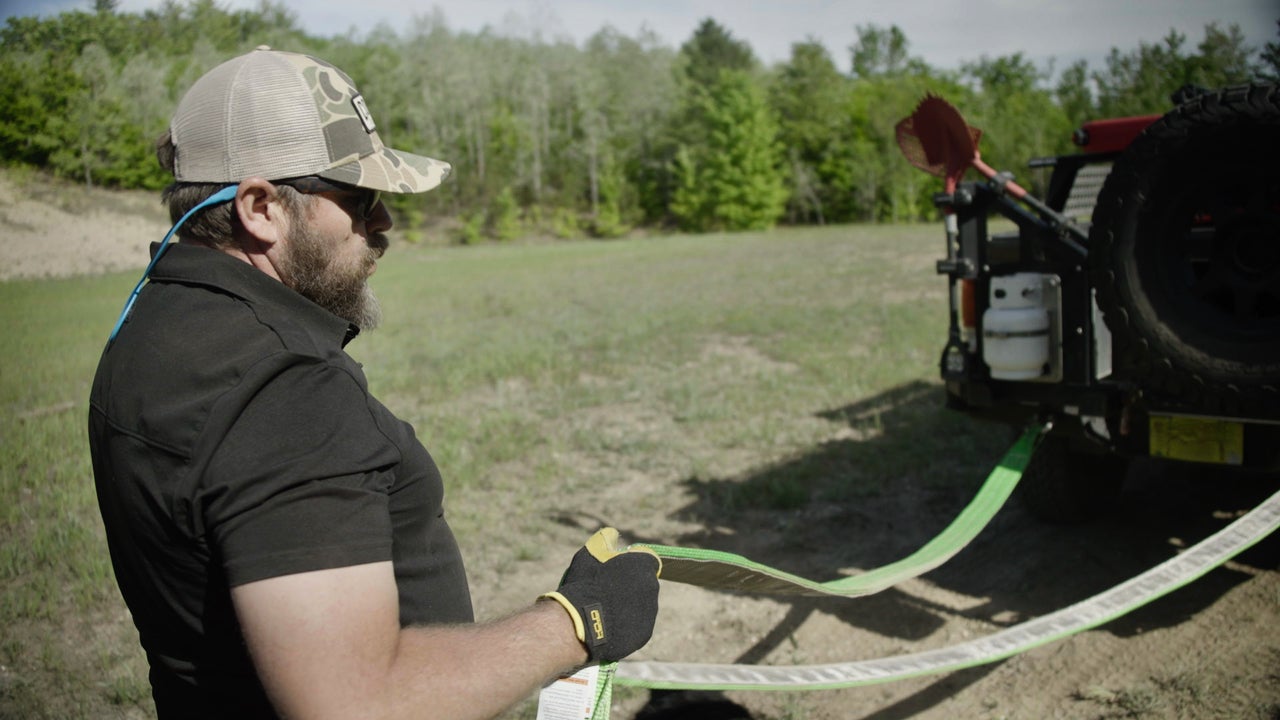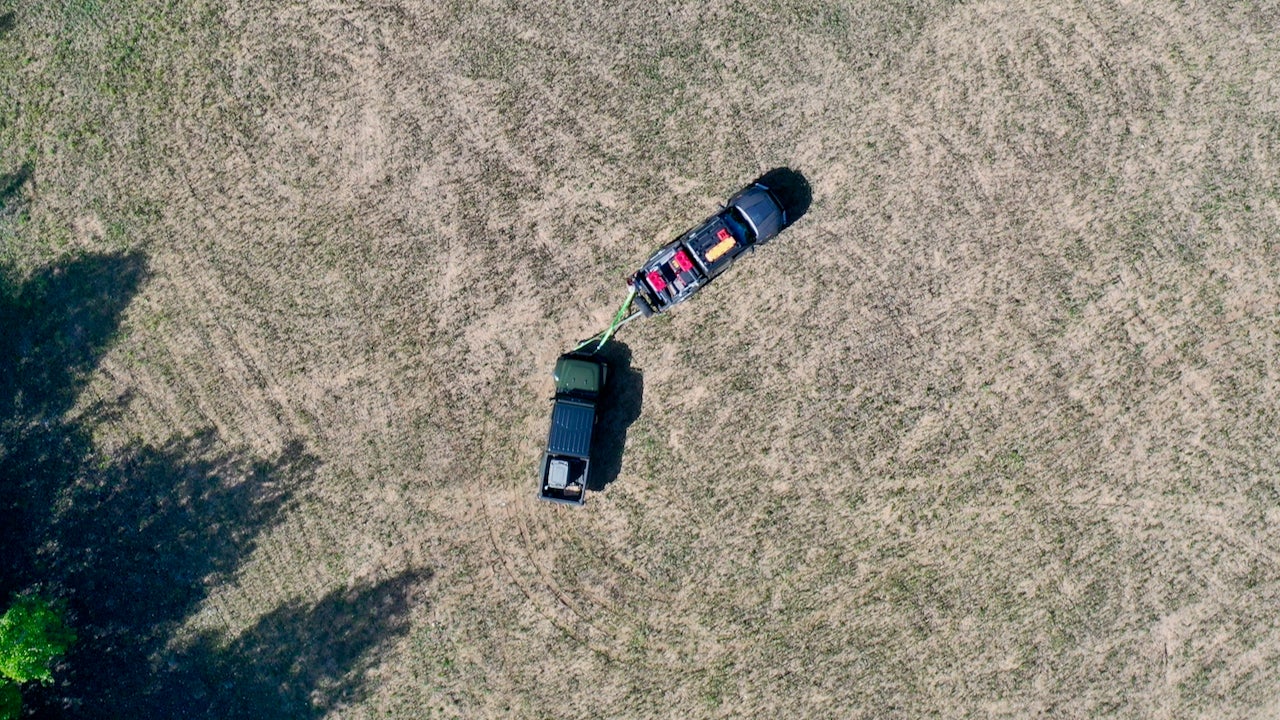How to Safely Recover and Tow a Vehicle Off-Road
Doc Rader 06.04.22

While one of the simplest and easiest ways to get a vehicle unstuck is to simply air down the tires, which will allow you to gain traction. Something like traction boards will also help provide more traction when none exists. Another option, is if we know we are going to need to tow a vehicle out of some sort of obstacle or if the vehicle will not be able to move under its own power — we may need to consider a different recovery method.

We can try to simply hook the vehicles together and have the lead vehicle pull the stuck vehicle out. This, of course, means we need to be able to get the recovery vehicle close enough to the vehicle stuck so that we can attach something as simple as a tree saver (or tow strap). Notice I said “strap” and not “chain.”
Off-Road Recovery Doesn’t Have to Be Hard (Or Dangerous)
Chains have been a common tool used over the years, while they may have had their place in the past we now have newer, lighter, and safer materials. Chains still have their place in an off-road kit, but chains can be extremely dangerous and less forgiving if not used properly. Like all techniques we recommend here, safety is paramount and we advocate for using gear that has been pull-tested and rated for the task.
Not all chains you buy are equal, some are purposely made for hoisting, and others are meant to tie things down. Selecting the proper chain is incredibly important, usually, your local hardware store will not carry the chains necessary for off-road recovery.
If you are using a chain that is not meant for the purpose it was designed for, you are rolling the dice, and when that chain finally fails, you are potentially looking at serious damage or injury. The following two videos show failures while using chains:
While chains can be used safely, they are not preferred because shock-loading is much more catastrophic and can happen even accidentally. Not to mention most people are not carrying chains that have undergone proper load testing (or is graded).
Tow Trucks are Expensive Off-Road
Not every towing company has a truck or expertise that is capable of executing an off-road recovery. Tow trucks are generally heavy and large and are often not designed to travel off-road. In that case, you may have to reach out to a local volunteer recovery group, or, worse, call the land management agency responsible for that area for help.
Traction-Xtraction: Recovering and Safely Towing a Vehicle
You cannot always perform a self-recovery when your vehicle becomes stuck. There are just some instances where you need another vehicle. It could be that the stuck vehicle doesn’t have the right tread on the tires and can’t gain traction. Or maybe the vehicle is just inoperable. In any case, we need to extract the vehicle from the challenging terrain and pull it to a more accessible location.

Just like all techniques, we should start with the least complex and safest recovery process we can, before moving into more complex and dangerous techniques. The method we are going to discuss does not use a winch line for recovery, but it does require that the recovery vehicle has good traction and two good rear anchor points.
For this method, the off-road recovery vehicle will need to have enough power to pull and tow the stuck vehicle from its stuck location. We also need a few simple pieces of equipment. We need two tree saver straps and four shackles (these can be soft or hard shackles depending on the recovery points on each vehicle). We can use longer material, but it won’t provide the control for towing that we need to safely move the vehicle.
Recover a Stuck Vehicle With Tree Savers
The recovery vehicle will be pointed in the direction of travel and needs to have two recovery points on the rear. The stuck vehicle needs to have two proper recovery points as well. These recovery points need to be rated for pulling the weight of the vehicle.

You then attach each tree strap crossing over each other between both vehicles forming an “X”. Driver’s front of the bogged vehicle attaches to the passenger rear of the recovery vehicle; the passenger front to the driver’s rear. If the straps have abrasion protection, you will want to face those together.
Communications
While not necessary, an important tip is to have some form of communication between the operators of both vehicles. This can be as simple as cell phones if you have service or handheld radios. This will allow the operators to notify each other of upcoming turns and obstacles or the need to stop, etc.
Driving with an “X” Bridle
The recovery driver (the one pulling) just needs to drive easy and smoothly. The “follow” driver needs to pay stricter attention and should attempt to follow the track of the lead vehicle, and be ready to operate the brake when needed.

The benefit of the system is that it allows you to maintain the tension between the vehicles when turning. If you are using one strap (or one connection), that strap will go slack as you turn the opposite side from where it is anchored. This will result in a jerking force when that slack is taken up again, which can cause damage to the vehicle if the connection becomes shock-loaded.
How Do You Tow?
This represents one way to extract and tow another vehicle. There are obviously several ways to tow. I prefer this method since it has a much higher safety margin, and it has been successful every time I have used it.
What methods do you use to tow vehicles? Let us know the comments.
Off-Road and Overlanding is sponsored by
To subscribe, visit: https://subscribe.onxmaps.com/offroad/purchase/membership
